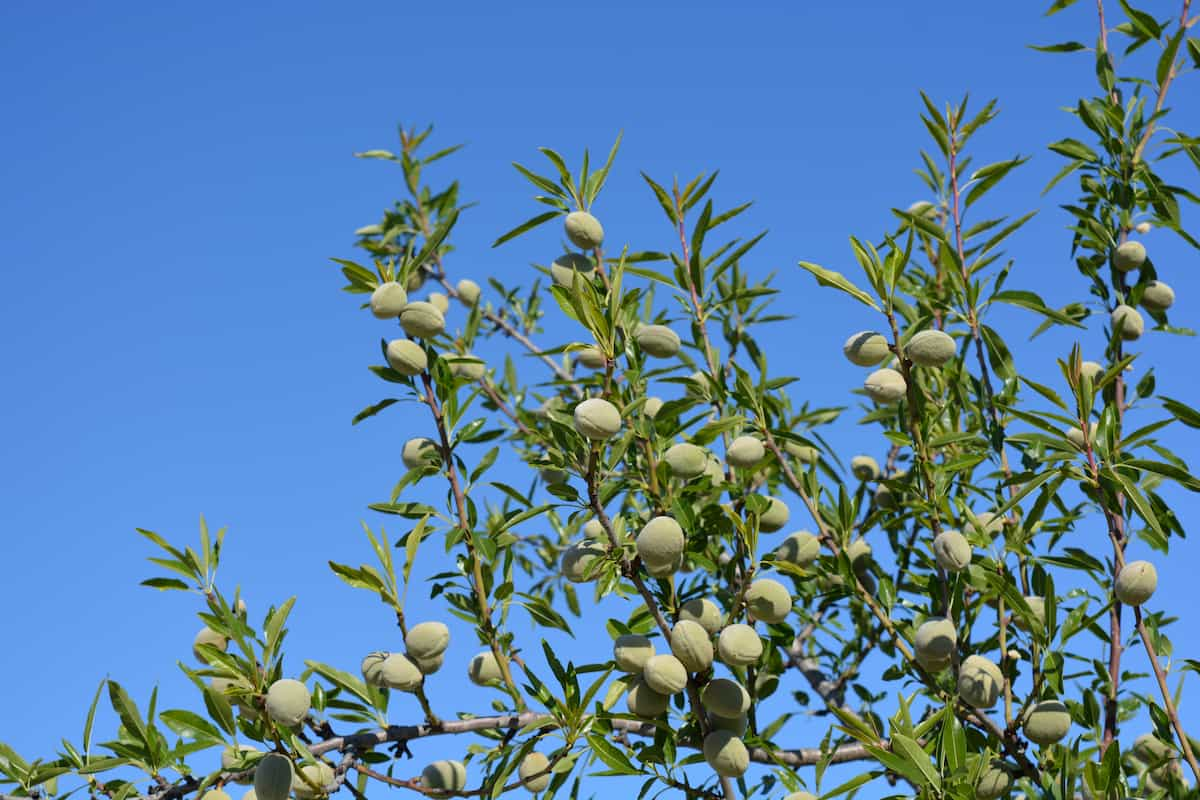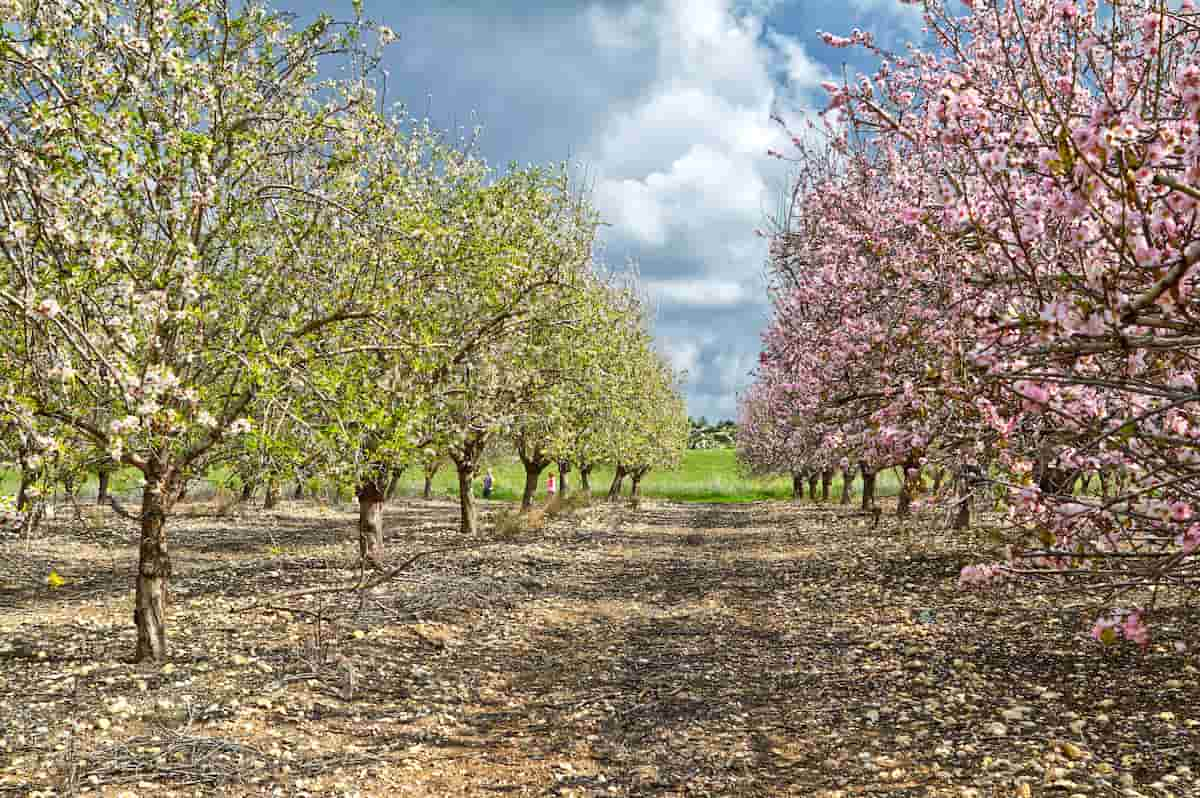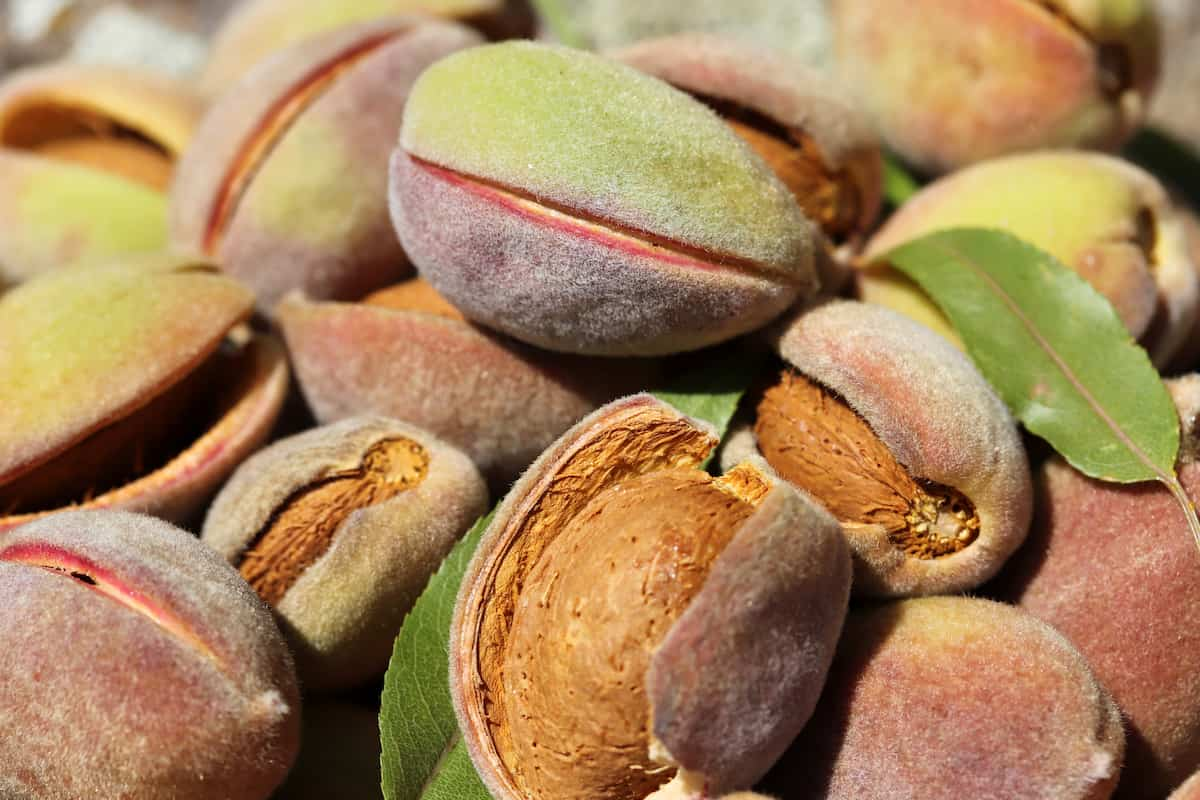Almonds are a popular and versatile crop grown worldwide, but they have a special place in the agricultural landscape of California. California produces 80% of the world’s almonds. Favorable climate conditions, an ideal growing season, and a well-established agricultural infrastructure, make California an excellent location for almond farming. This comprehensive guide will provide a step-by-step process for starting your own almond farm in California, from planting to harvesting.

How to Start Almonds Farming in California
Site Selection and Preparation
The first step in establishing an almond farm is selecting an appropriate site. Almonds thrive in regions with Mediterranean climates, characterized by hot, dry summers and mild, wet winters. This climate is ideal for almond farming, providing the necessary chill hours for proper dormancy and encouraging successful pollination. Additionally, almonds require well-draining soils, such as loamy or sandy soils, with a pH between 6 and 8. Once you’ve identified a suitable location, you should clear the land of any debris, weeds, or existing vegetation to prepare it for planting.
Choosing Almond Varieties
Selecting the right almond variety is crucial for a successful harvest. Some popular almond varieties grown in California include ‘Nonpareil,’ ‘Carmel,’ ‘Butte,’ ‘Padre,’ and ‘Mission.’ Each variety has unique characteristics, such as flavor, size, and shell thickness. Choosing a variety that is well-suited to your region and has a proven track record of success is important. Additionally, you must plant a compatible pollenizer variety, as almonds are not self-pollinating.
Planting Almond Trees
The best time to plant almond trees in California is during the dormant season, typically between December and February. This allows the trees to establish a strong root system before the growing season begins. When planting a tree, the hole should be wider than the root ball and slightly deeper. Place the tree in the hole with the graft union at least 2 inches above the ground. Fill the hole back up with water and soil. Fill it well to get rid of any air spaces.
Tree Spacing and Layout
Proper tree spacing and layout are essential for maximizing almond yield and ensuring efficient farm management. In general, almond trees should be planted at a spacing of 20-22 feet apart within rows, with 22-24 feet between rows. This equates to approximately 90-110 trees per acre. Depending on your farm’s specific needs and layout, the trees can be arranged in various configurations, such as square or hexagonal patterns.
Irrigation and Water Management
Almonds have moderate water requirements and can be successfully grown using drip, micro-sprinkler, or flood irrigation systems. Drip irrigation is the most water-efficient method, as it delivers water directly to the root zone, minimizing evaporation and runoff. It is important to carefully manage water use throughout the growing season, as overwatering can lead to root rot and other diseases, while underwatering can reduce yield and tree health.
In case you missed it: How to Start Almond Farming in the USA: A Step-By-Step Production Guide

Fertilization and Nutrient Management
Almonds have specific nutrient requirements that must be met for optimal growth and production. Nitrogen, phosphorus, potassium, and zinc are the primary nutrients required by almond trees. Nitrogen should be applied in split applications throughout the growing season, with the majority applied during the period of rapid shoot growth.
Phosphorus and potassium can be applied in a single application before bud break, while zinc should be applied as a foliar spray during the early spring. It is essential to regularly monitor soil and leaf nutrient levels to ensure that your trees receive the appropriate amounts of each nutrient. Soil testing and leaf analysis are valuable tools for guiding fertilization strategy and maintaining optimal tree health.
Pest and Disease Management
Almond trees can be susceptible to various pests and diseases, negatively impacting yield and overall tree health. Common pests in California almond orchards include navel orange worm, peach twig borer, and spider mites. Integrated Pest Management (IPM) strategies, such as monitoring pest populations, using biological control agents, and applying targeted chemical treatments, can help minimize pest issues.
Regarding diseases, almond trees can be affected by fungal diseases like hull rot, brown rot, and shot hole. Regularly monitoring your trees for signs of disease and implementing preventative measures, such as proper pruning and sanitation practices, can help keep your orchard healthy and productive.
Pruning and Training
Pruning and training are crucial components of almond tree management. Pruning helps maintain tree shape and size, improves light penetration and air circulation within the canopy, and promotes healthy, productive growth. Almond trees should be pruned annually during their dormant period, typically between November and February.
Training young trees involves selecting a central leader and establishing scaffold branches, which will form the main structural framework of the tree. This process should begin in the first year after planting and continue throughout the tree’s early years.
Pollination and Bee Management
Almond trees rely on honeybees for pollination, as they are not self-pollinating. It is essential to provide sufficient numbers of healthy honeybee colonies during the almond bloom period, typically from mid-February to mid-March in California. On average, two to three hives per acre are recommended for adequate pollination. Bees should be placed in the orchard at the beginning of bloom, and orchard management practices, such as pesticide applications and irrigation, should be carefully timed to avoid negatively impacting bee health.
Harvesting Almonds
Almond harvesting typically occurs in California from late August to early October, depending on the specific variety and local climate conditions. Harvesting involves two main steps: shaking the trees to remove the nuts and collecting the fallen nuts from the orchard floor.
In case you missed it: How to Start Watermelon Farming in California: A Step-by-Step Production Guide for Planting to Harvesting

Mechanical tree shakers are used to dislodge the almonds from the trees, leaving them on the ground to dry for 7-10 days. Once the nuts have reached the appropriate moisture content (around 6% kernel moisture), they are collected using specialized equipment and transported to a processing facility for hulling shelling, and further processing.
Conclusion
Starting an almond farm in California can be rewarding and profitable. Almond farming requires careful planning, attention to detail, and a commitment to ongoing learning and improvement. The almond business in California is booming, and you may help contribute to that success with the appropriate attitude and hard work.
- Ultimate Guide to Ossabaw Island Hog: Breeding, Raising, Diet, and Care
- Ultimate Guide to Juliana Pig: Raising Facts, Size, Diet, Care, and Lifespan
- Raising Lleyn Sheep: Disadvantages, Price, Uses, Characteristics, and Care
- Ultimate Guide to Meishan Pig: Breed Facts, Breeding, Raising, and Care
- Ultimate Guide to Teacup Pigs: Raising, Diet, Lifespan, Cost, and Care
- Guide to Raising Poll Dorset Sheep: Facts, Profile, Characteristics, Uses, and Care
- Ultimate Guide to Bighorn Sheep: Characteristics, Diet, Lifespan, Breeding, and Lifecycle
- Ultimate Guide to Raising Katahdin Sheep: Farming Facts, Breed Profile, Uses, and Care
- Ultimate Guide to Raising Oreo Cows: Belted Galloways Farming Facts, Profile, Uses, and Care